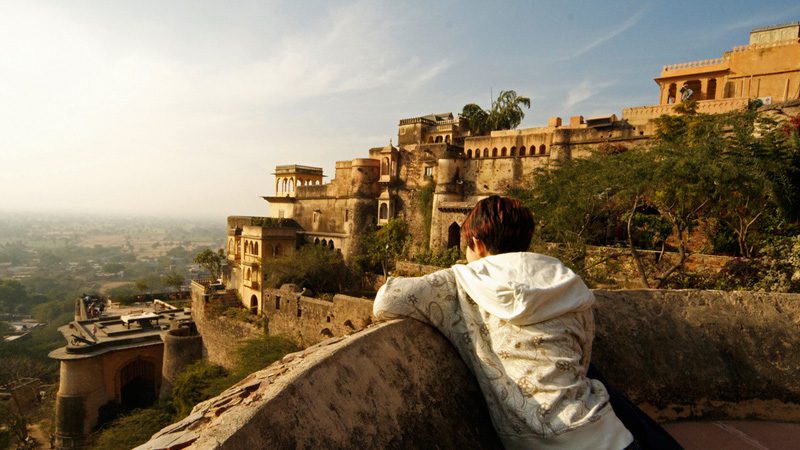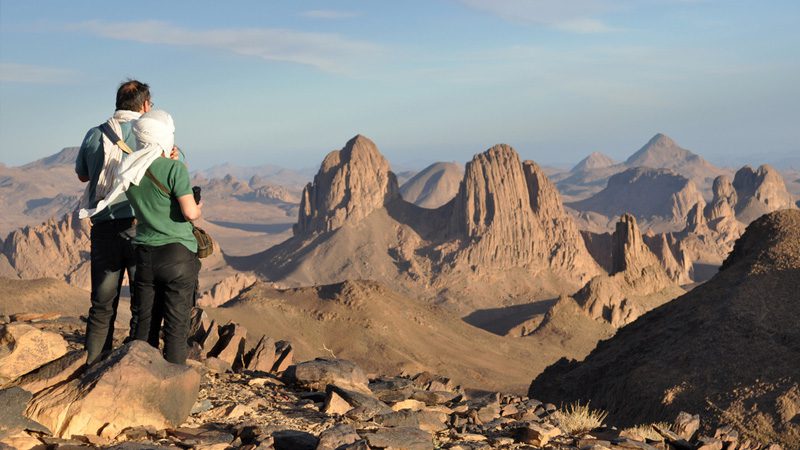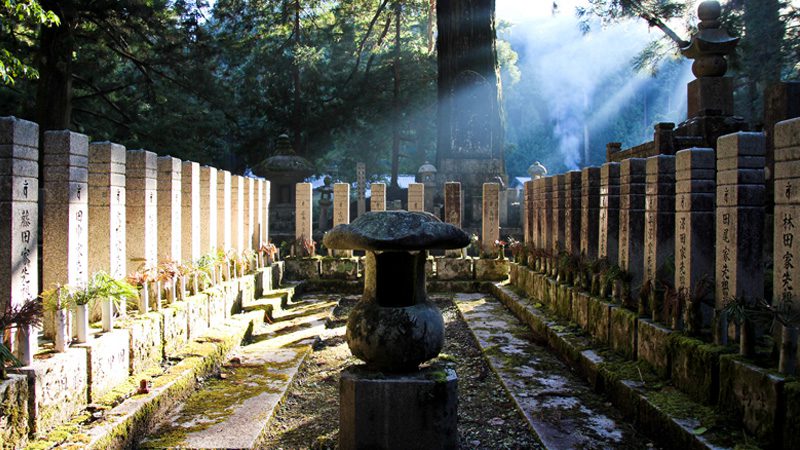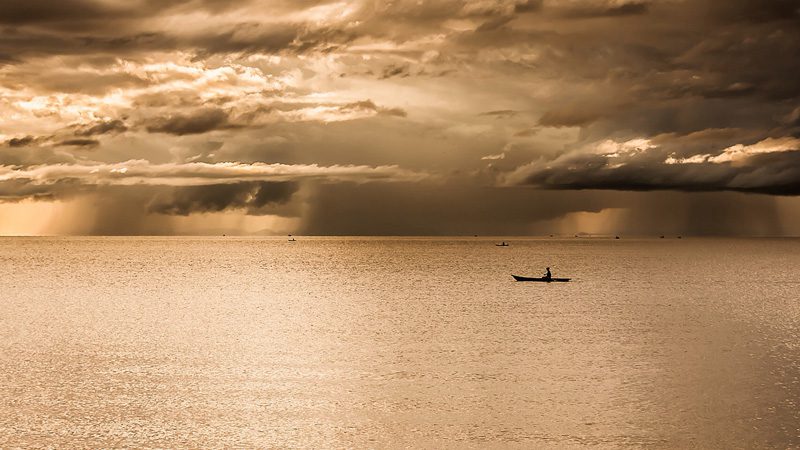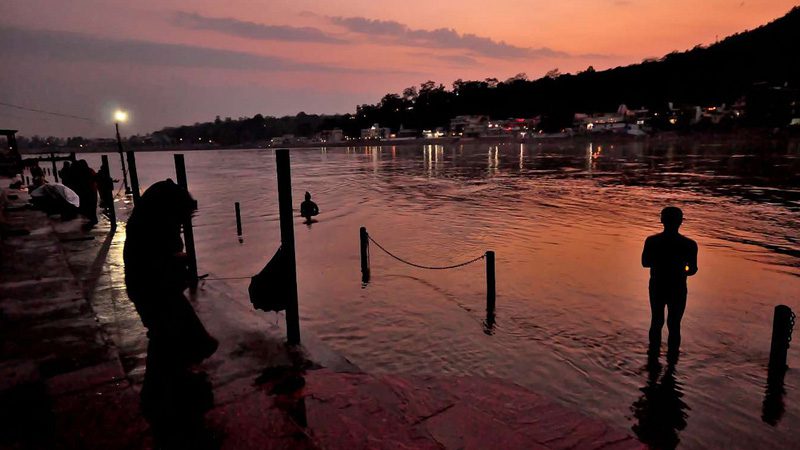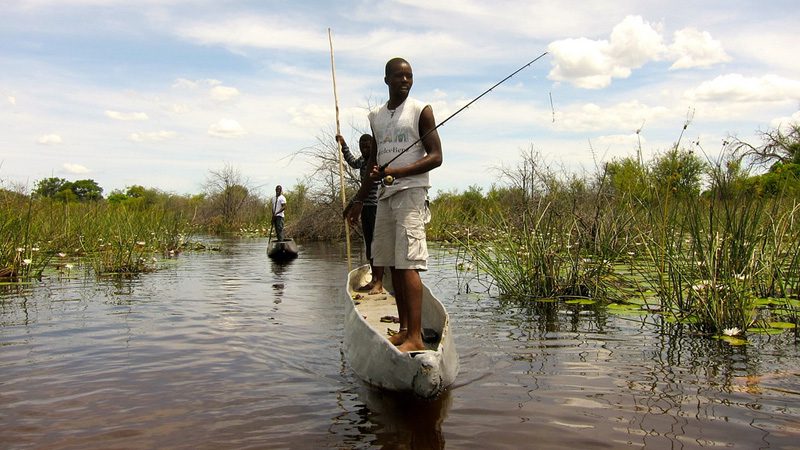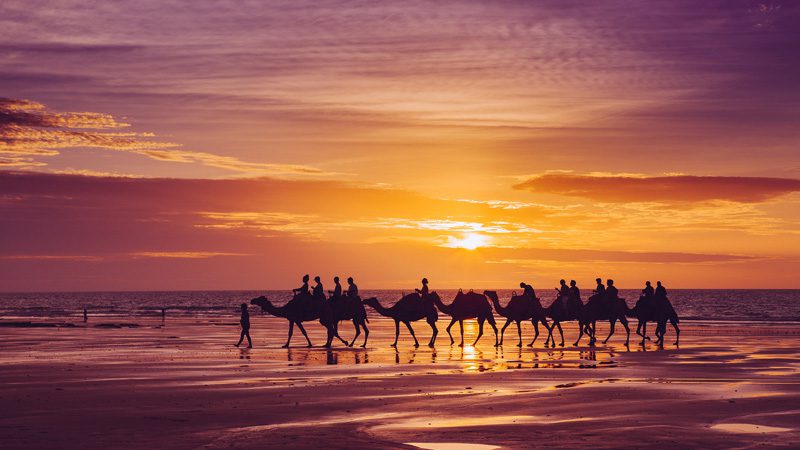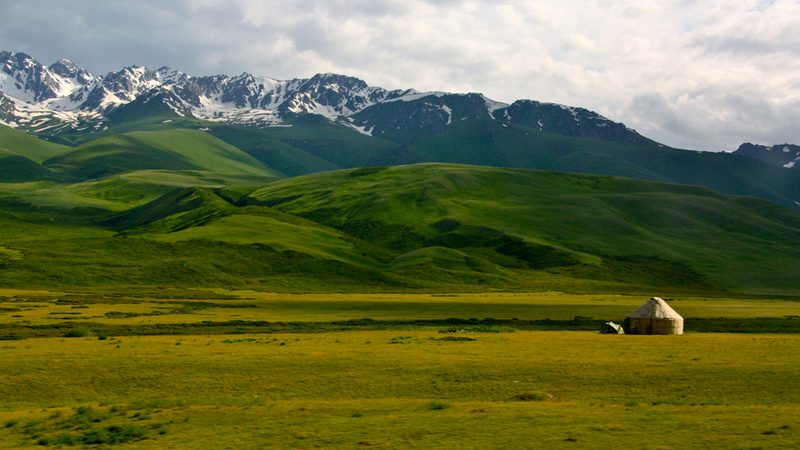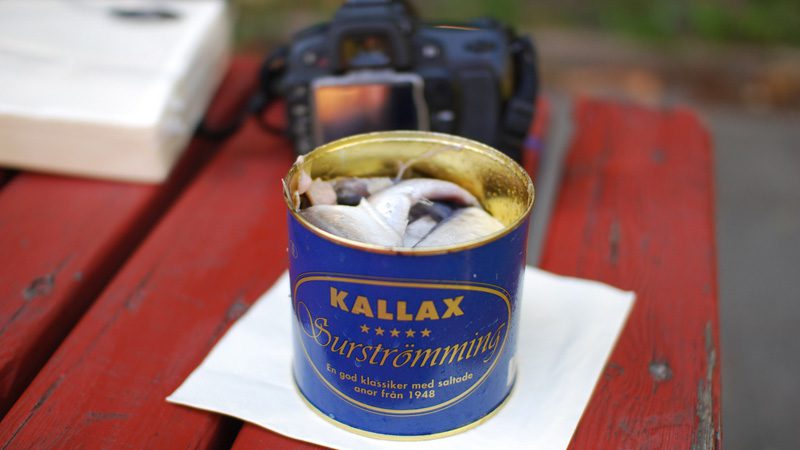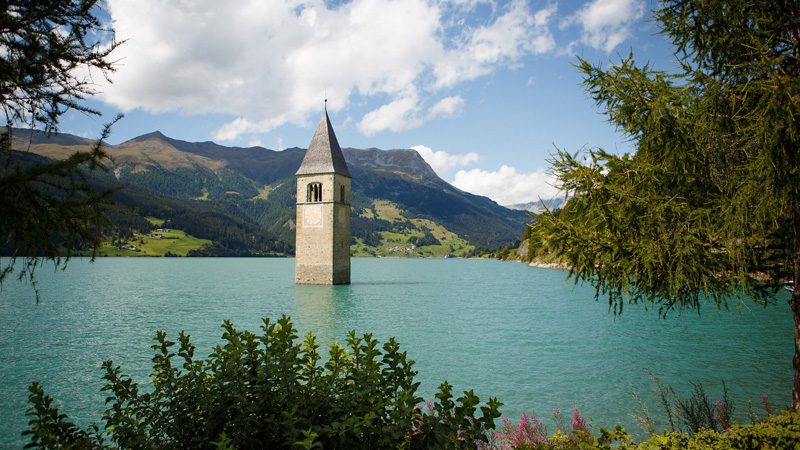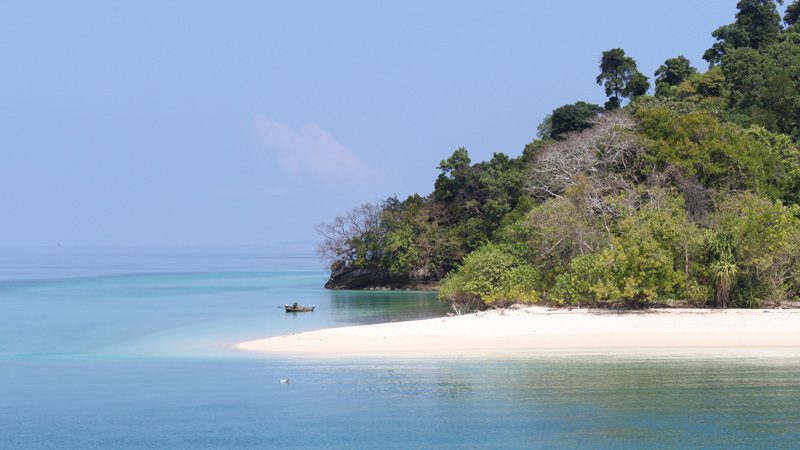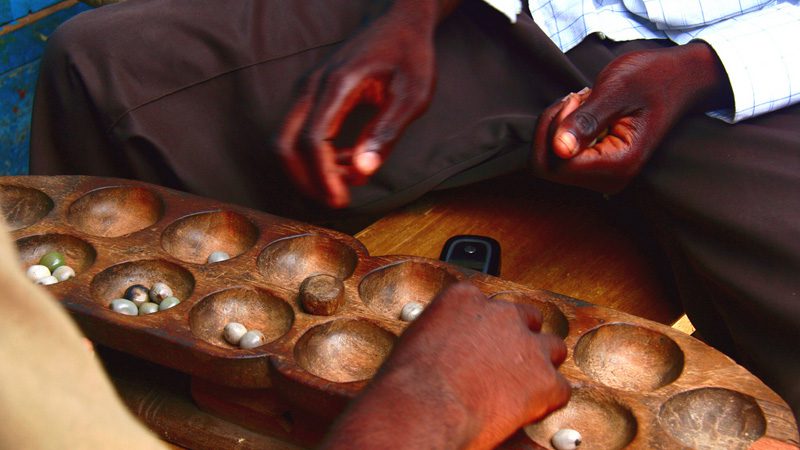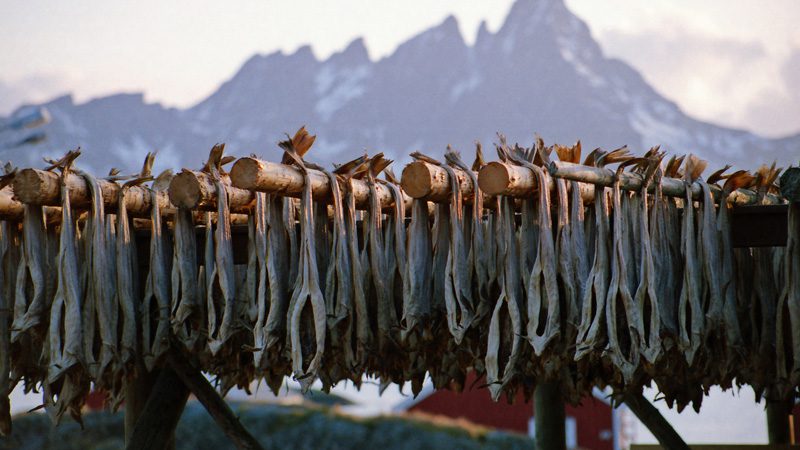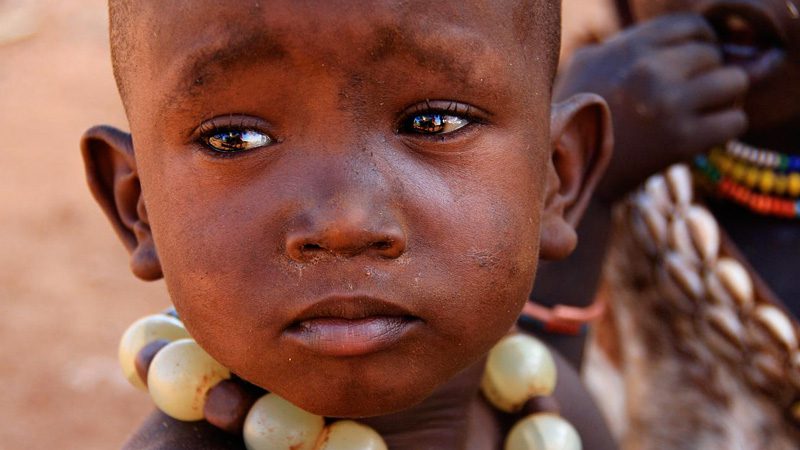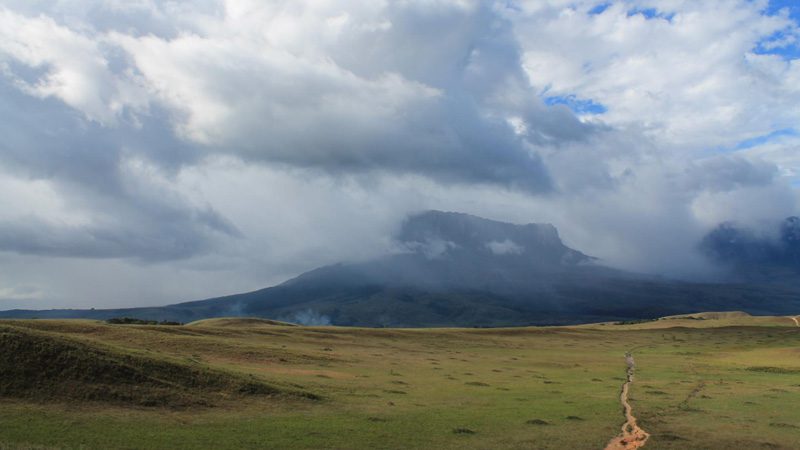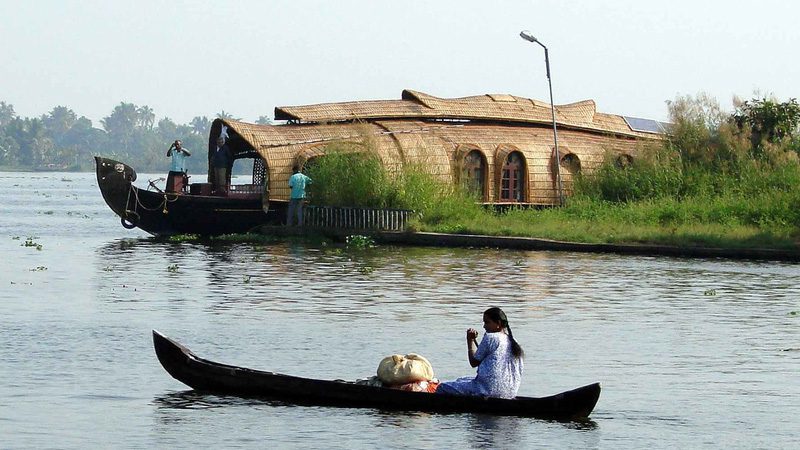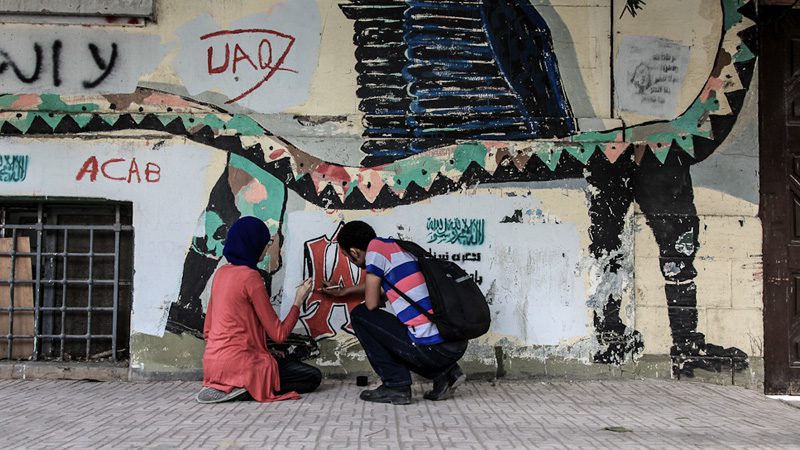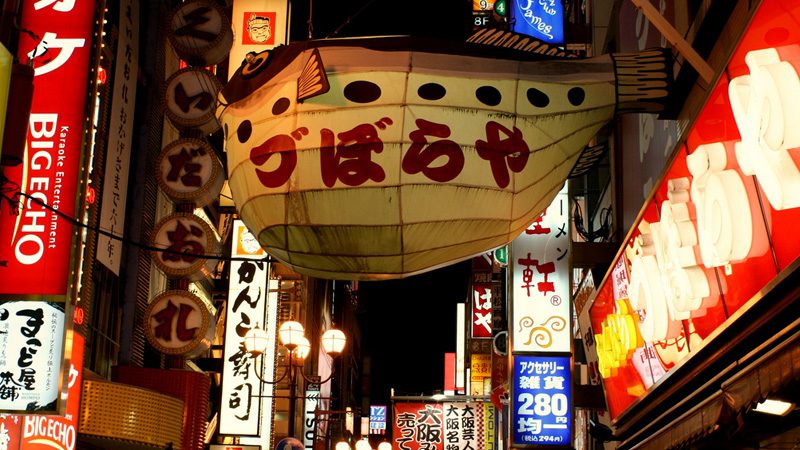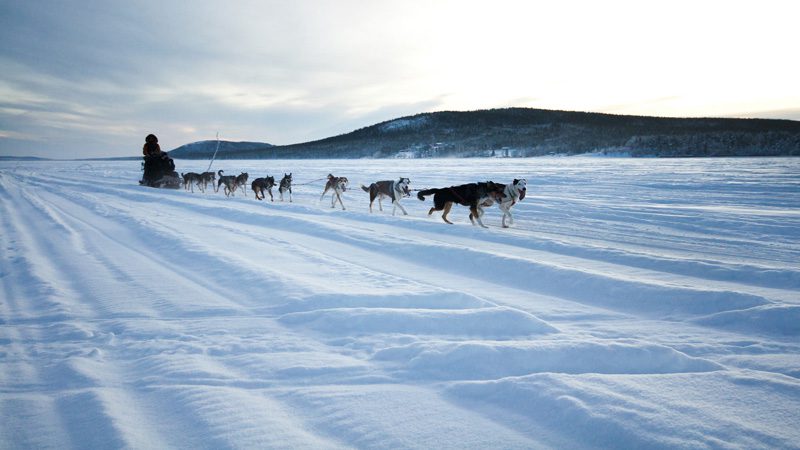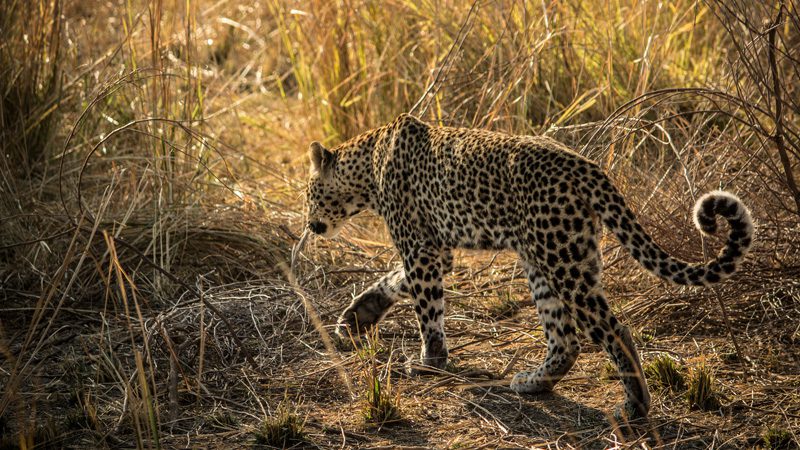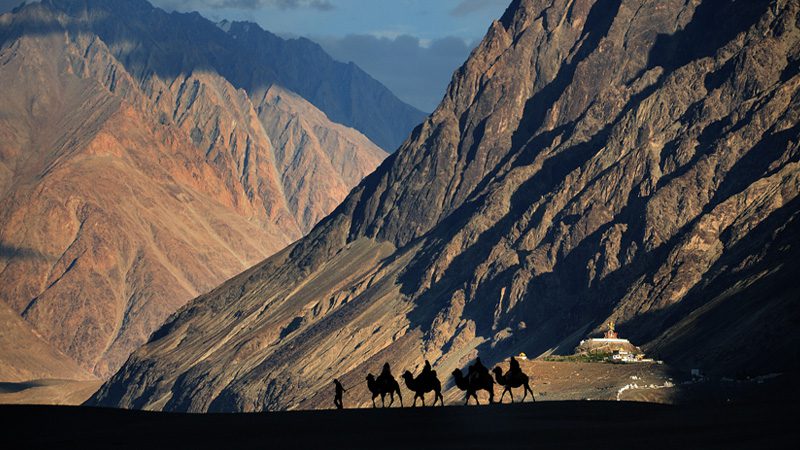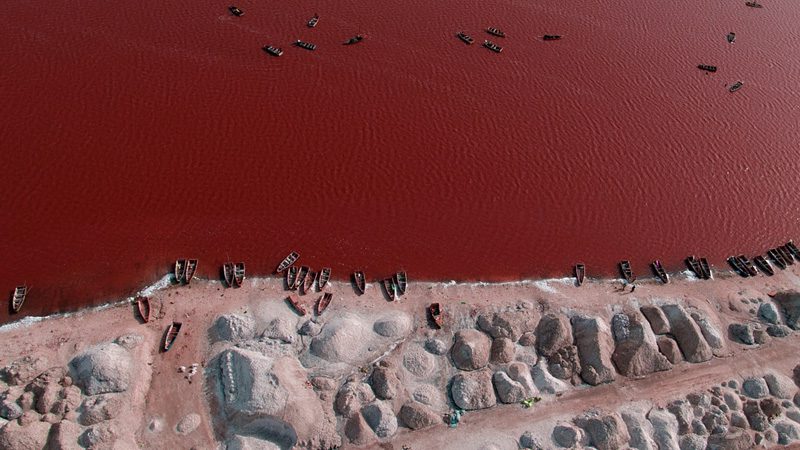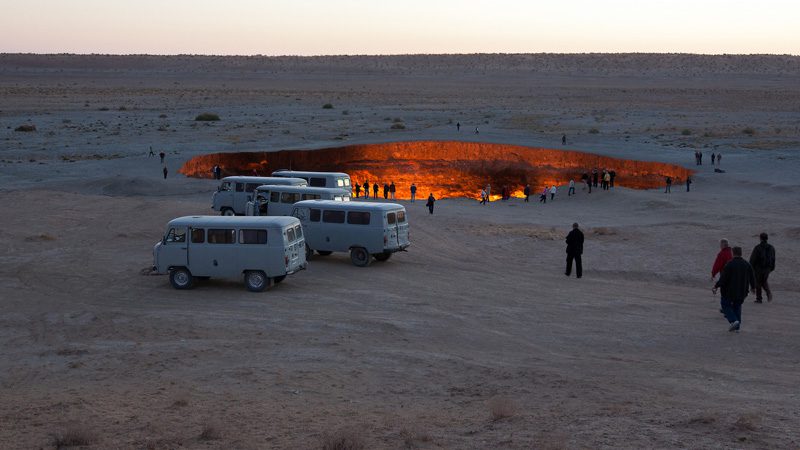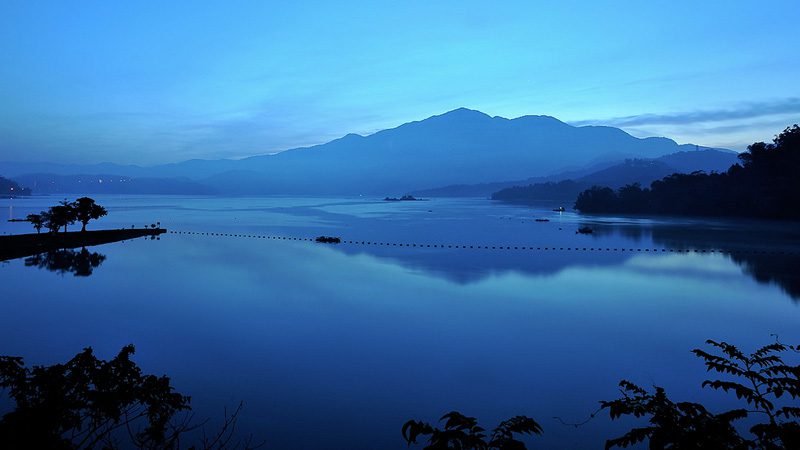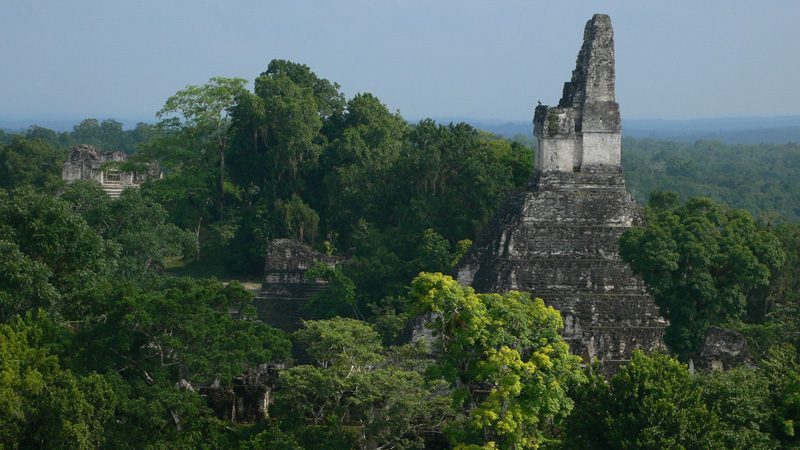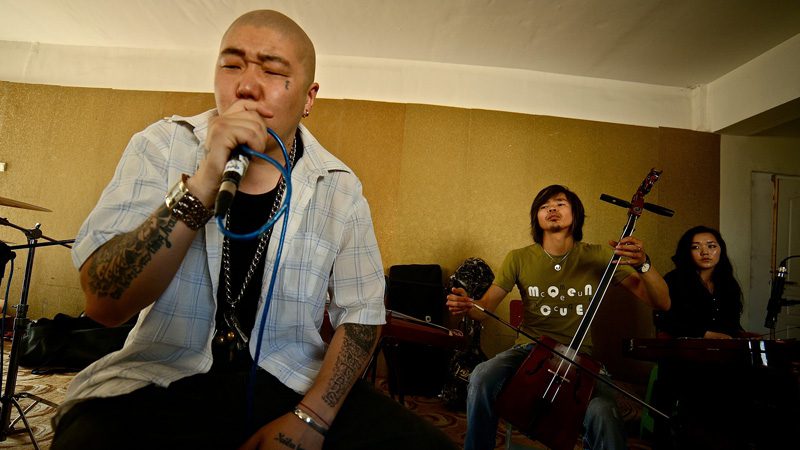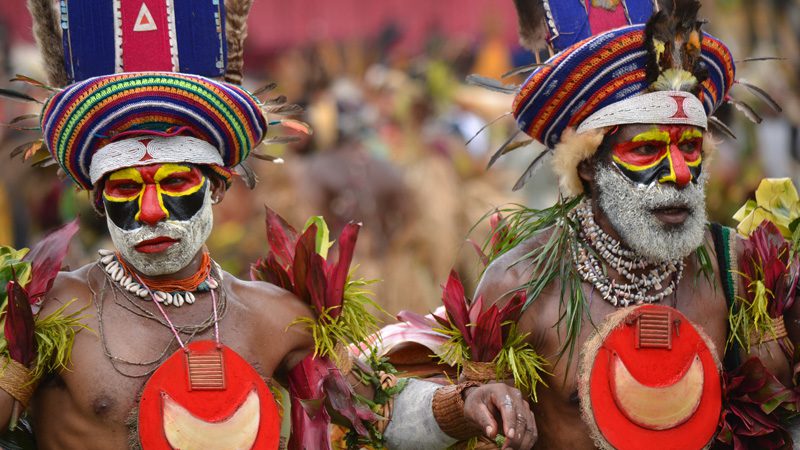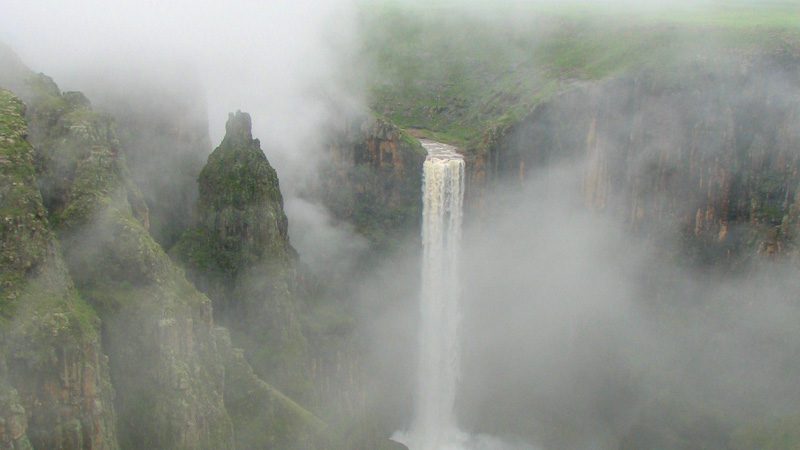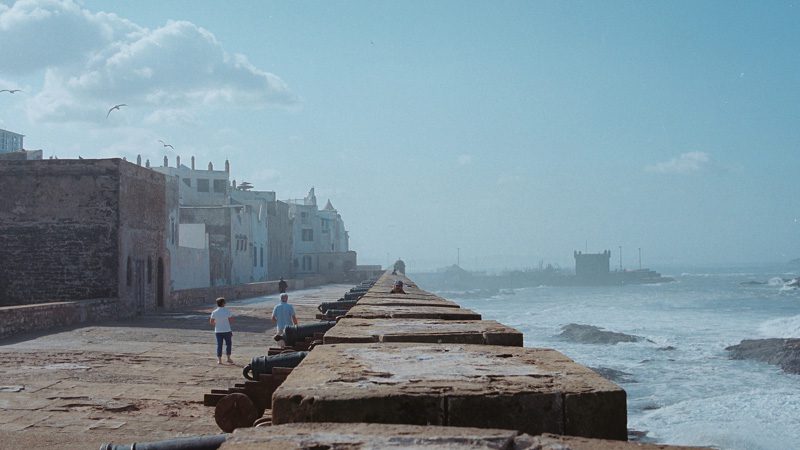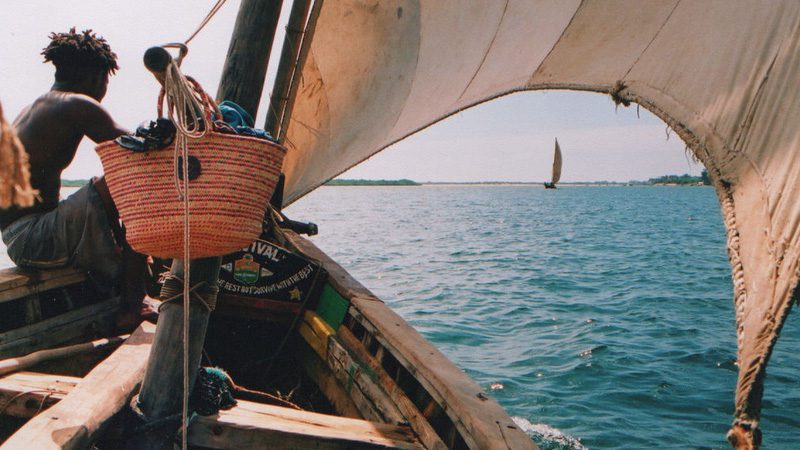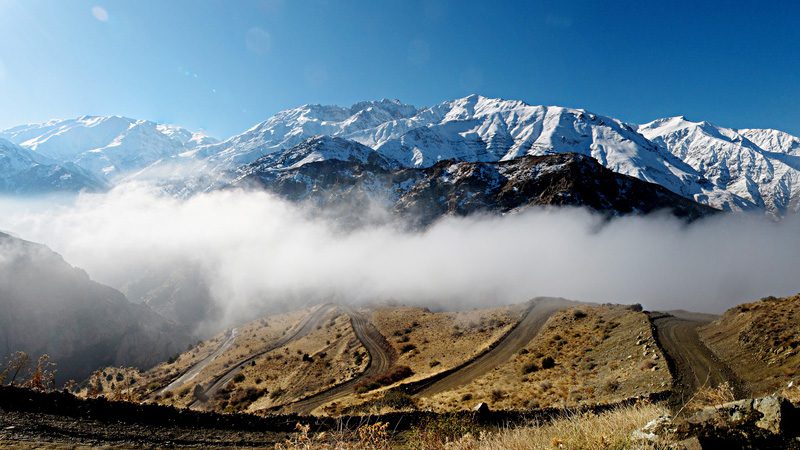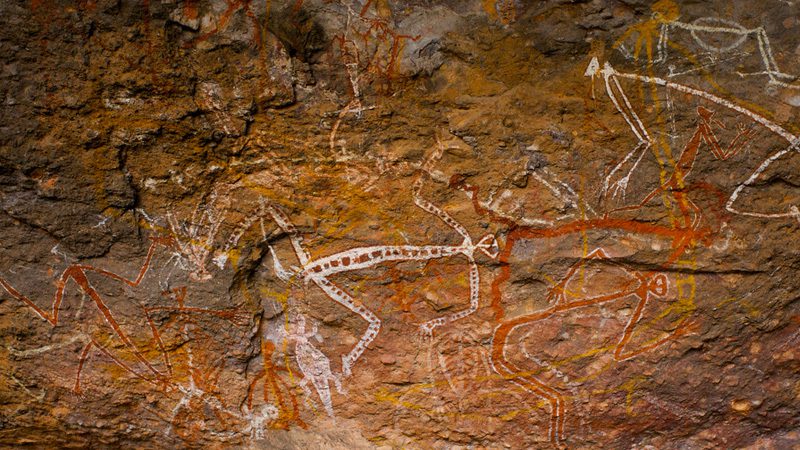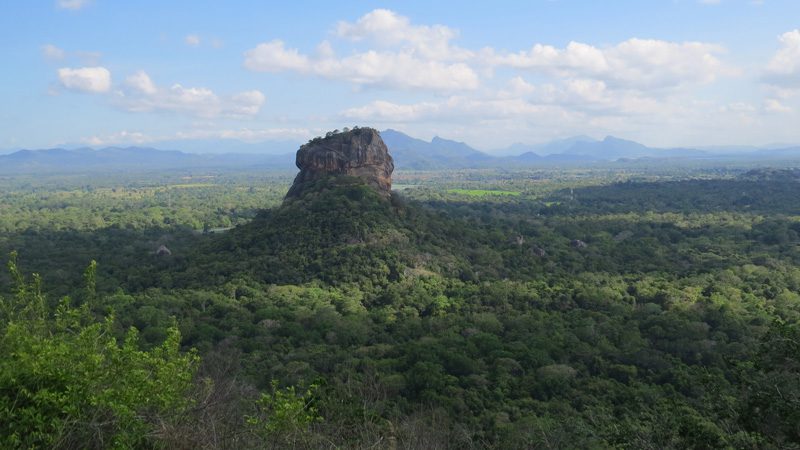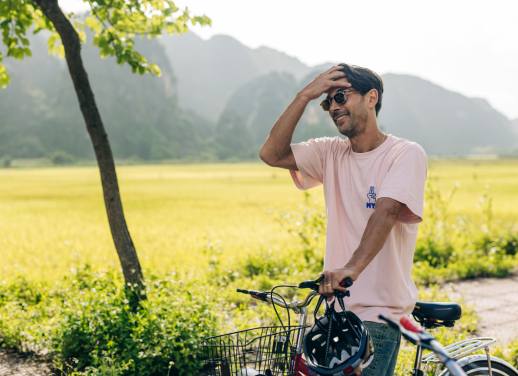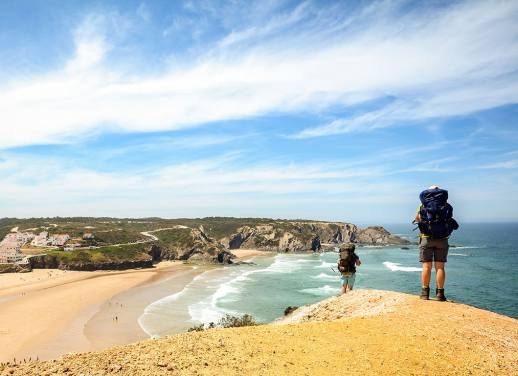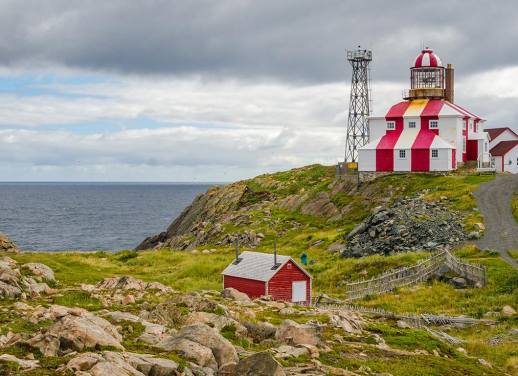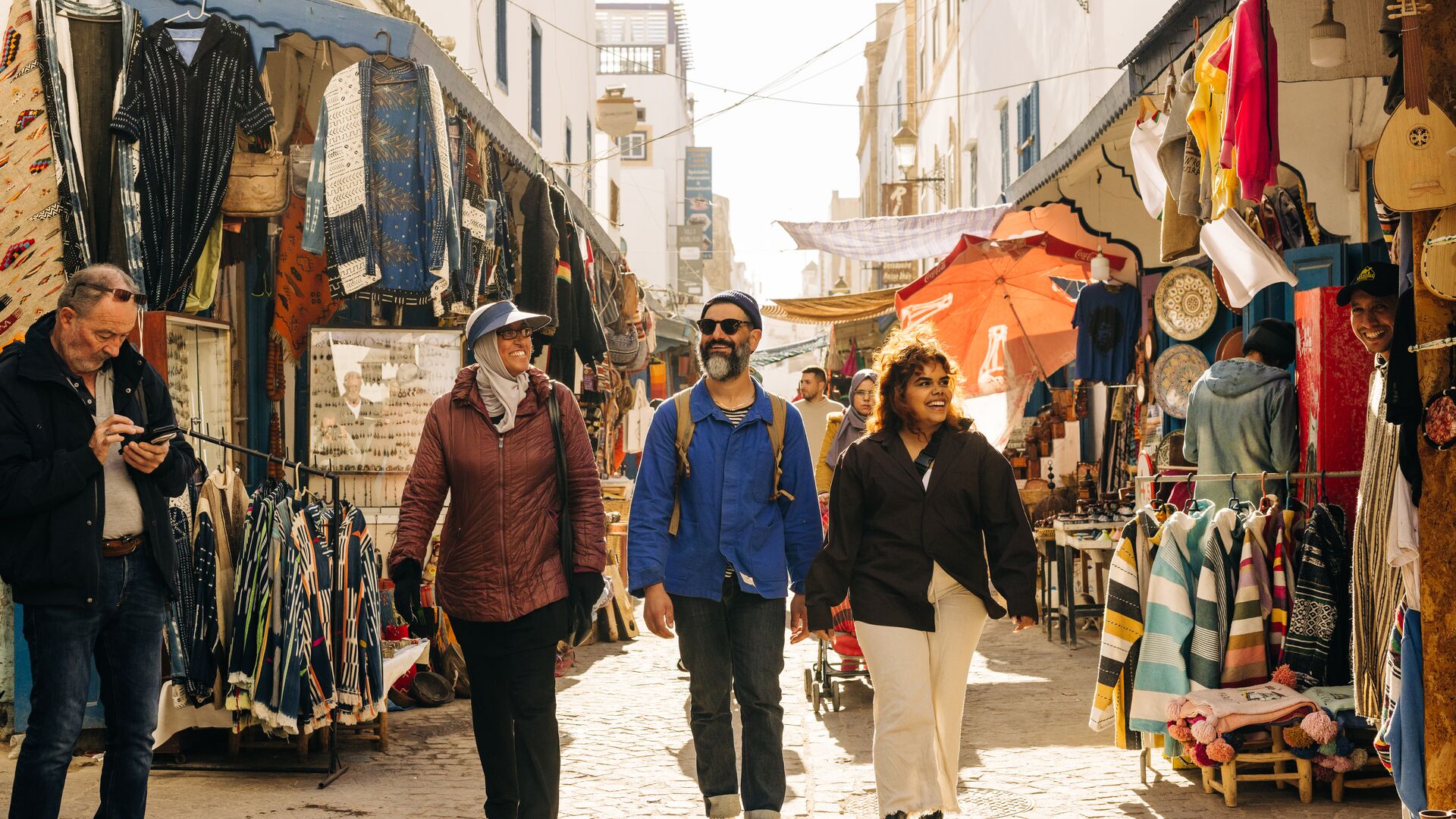Planning trips around countries is so 2016. This year it’s all about experiences – flying halfway around the world to eat fugu fish in Osaka, sail a dhow in Lamu or camp out yurt-style on the grass steppe of Kyrgyzstan. It’s not so much the where as the what that matters.
So here you go, people. Our definitive list of mind-blowing experiences to have in 2017. If you manage to tick off Surströmming (No.9) get back to us…we’d love to hear your survival story.
1. Camp overnight at the holy hermitage of Assekrem
This feels about as far away from civilisation as you can get. In 1911, French priest Charles de Foucauld ventured deep into the warped mountains of Algeria’s Atakor peninsula and built a small stone hermitage on its highest peak, Assekrem. It means The End of the World in the local Tuareg language, which is pretty appropriate for a landscape that looks like it belongs in the pages of a Tolkien novel.
Where: Assekrem is in the Hoggar Mountains in southeast Algeria, about 70 kilometres from Tamanrasset.
When: June, July and August are the warmest and driest times to visit Algeria, but shoulder months like March or September are also lovely.
How: Camping out near the hermitage is the best way to get a feel for Assekrem. Make sure to rise early too for one of the world’s truly great sunrises.
2. Take a morning stroll through Koya San’s Okunoin cemetery
It takes about four trains, a cable car and a bus to get to the small monastic town of Koya San, Japan, and the reason most people make the effort is this: the Okunoin cemetery. It’s basically a collection of 200,000 tombstones scattered in an ancient cedar forest. Head there at dawn (in the evening the sun shines from the wrong angle) as the sun spears through the morning mists, illuminating graves, tombs, moss-covered stone archways and crumbling, ancient stonework. A photographer’s dream.
Where: Koya San is a mountain town just south-east of Osaka.
When: Take your pick: autumn for incredible foliage, spring for cherry blossoms or winter for atmospheric, snow-covered tombs.
How: The cemetery really comes to life in the mornings, and the walk to the mausoleum of Kobo-Daishi (the founder of Koya San) takes about 30 minutes. Or just jump on our Classic Japan tour.
3. Paddle kayaks on Lake Malawi
Tiny Malawi is often dismissed as Africa for beginners, but we prefer it’s other nickname: the warm heart of Africa. It’s home to Lake Malawi, one of the world’s biggest, deepest and prettiest lakes: 570 kilometres of clear water, deserted sandy islands and colourful cichlid fish. There are more fish species here than any other lake in the world, and you can see most of them from the saddle of a kayak.
Where: Lake Malawi lies in a valley at the beginning of the East African Rift, on the borders of Malawi and Mozambique.
When: Winter is actually the perfect time to visit Lake Malawi. Come between May and late October for sunny days and clear skies.
How: Plenty of operators hire kayaks out for day trips. Paddle to one of the lake’s deserted islands, open a good book and laze the day away. Check out Malawi trips for more info.
4. Practise your downward dog in Rishikesh
It’s probably The Beatles’ fault. Ever since they showed up at the ashram of the Maharishi Mahesh Yogi in the 1960s, Rishikesh has been the unofficial spiritual capital of the world. Today it’s the global epicentre of yoga, with classes and meditation techniques taught beside the fast flowing waters of the Ganges. Surrounded by misty forest hills, the temple bells ringing in the distance, there’s nowhere better to work on that Happy Baby pose while practicing your ommmms.
Where: Rishikesh is in the foothills of the Himalayas, tucked away in northern India.
When: Rishikesh has a cooler, more continental climate than the Indian lowlands. February to March or August to October is best.
How: Finding yoga classes in Rishikesh isn’t hard. The hard bit may be avoiding them. Remember to stretch!
ANOTHER BEAUTIFUL INDIAN DESTINATION: UDAIPUR, THE ‘VENICE OF THE EAST’
5. Spend the night in a real Rajasthani Palace
The idea of palaces is usually to keep the common folk (i.e. us) out. But not so in Rajasthan. The region is dotted with forts and citadels that have been turned into heritage hotels. Some are still residents of genuine royal families and the descendants of the Maharajas (they just kept the best bedrooms for themselves). It’s a win for everybody – a steady tourism income preserves these beautiful old buildings, and travellers get to bathe in marble bathrooms like the princes of old.
Where: There are dozens of heritage hotels to choose from, but for something pretty special, try Castle Bijaipur, a 16th-century fortress run by the local ruling family.
When: October to February is a great time to visit Rajasthan. Try to make it for the Diwali Festival in November for an extra treat.
How: Easy. We run a number of India trips that stay in heritage hotels. The tricky bit is picking your favourite.
6. Take a mokoro through the Okovango Delta
Generally we like to avoid superlatives like ‘life changing’, but they’re hard to dodge when it comes to the Okovango Delta. Botswana’s lush green counterpart to the orange sands of the Kalahari, it’s a massive network of inky waters alive with wading herds of elephant, hippo and buffalo. In the dry season, the silhouettes of dead trees line the water and the only sound is the steady slosh of the paddles on your mokoro raft. Take a picture – you’ll want to remember this.
Where: Okovango is tucked away in the north-east corner of Botswana. Its waters never actually run to the sea, but soak into the country’s vast salt plains.
When: For water-based activities like paddling on a mokoro, the best time to visit is between June and August.
How: Intrepid has plenty of Botswana tours than run canoe trips down the Okovango Delta.
SUBSCRIBE TO INTREPID’S NEWSLETTER FOR TRAVEL INSPO, COMPETITIONS, GIVEAWAYS & MORE
7. Ride camels on Cable Beach at sunset
Cable Beach in Broome has a few claims to fame: miles and miles of perfect golden sand, nudists and sunset camel rides. Yeah it’s a little touristy (unless you’re hardcore and BYO camel) but who cares? You only need to do a quick Google image search to discover the kind of jaw-dropping views you’re in for. The locals know the score and, at about 6 pm every day during the summer months, they swarm north of the rocks for sunset drinks and a barbecue or two. Straya.
Where: Cable Beach is a 22-kilometre stretch of sand just near Broome in Western Australia.
When: Come in the summer months for long days and lots of sun (November to February)
How: To successfully ride a camel, hold on tight, block your nose and try to avoid the spit. Check out our West Coast tours for more info.
8. Camp out with locals in a yurt on the plains of Kyrgyzstan
On the grasslands and mountain meadows of Kyrgyzstan, where tribesmen play polo with the bodies of headless goats and an old Soviet vibe still lingers on, the yurt is the preferred form of accommodation. It’s light, strong and, most importantly, portable. Known as gers in Mongolia, they’re a common sight across all central Asia, but it’s hard to beat a yurt stay in Kyrgyzstan for novelty factor and sheer natural beauty. For a really special spot, try the plains above Song-Kol Lake.
Where: For the geographically challenged (like me), you can find Kyrgyzstan between China, Kazakhstan and Tajikistan in Central Asia.
When: Kyrgyzstan is pretty seasonal. Try to stick to the warmer months between May and October.
How: Easy. We run a bunch of trips through Kyrgyzstan, and most feature a few nights in a yurt.
9. Dare to eat Surströmming in Sweden
According to a recent Japanese study, Surströmming has the worst documented scent of any food in the world. If you ask the Swedes, whose delicacy it is, they maintain that it tastes a lot better than it smells. Surströmming is basically salted and fermented sea herring. It can only be opened outdoors, as the smell will destroy any building it touches, but when spread on a crispy slice of tunnbrod bread and topped with a slice of potato, it’s actually quite tasty. Be brave. You can do this.
Where: Surströmming is traditionally a dish of northern Sweden, but you can find tins all over the country.
When: The herring are caught in April and May, but pre-fermented cans are available year-round.
How: Outdoors is a must (some people even open the tin under water). Eat with potato and onions and crispy tunnbrod.
READ MORE: HOW TO BUDGET TRAVEL IN SCANDINAVIA
10. Walk on water in Lake Resia
It’s got to be one of the strangest sights in Europe: a genuine 14th-century church tower poking from the blue waters of a lake in the Italian Alps. Lake Resia (or Reschensee as it’s known) is the result of a controversial damming project in the late 1940s where a local energy company flooded the valley (and several villages). In winter the lake freezes solid, and you can actually walk across the ice to the bell tower.
Where: Lake Resia sits just south of the Reschen Pass near the Italy-Austria border.
When: In summer the lake is a beautiful spot for a picnic or a spot of kite surfing, but come in winter if you want to walk to the church.
How: Local legend says that, if you listen closely, you can still hear the church bells ringing…
11. Sail Myanmar’s Myeik Archipelago
Off-limits to travellers since the late 1940s, tourism in Myanmar’s Myeik Archipelago (or Mergui as it’s known) is still in its infancy. The few companies that venture out across the waters have discovered something really special: a collection of idyllic islands completely cut-off from the modern world. The only people that live here are free-diving fisher tribes called Moken who reside in little villages or high in coastal sea caves. There’s no infrastructure in Mergui yet – the only way to get in is to sail.
Where: Off the coast of southern Myanmar (formerly Burma), just south of the seaside town of Myeik.
When: Myanmar, like most equatorial countries, has a wet season and a dry season. Visit in October to February and you’ll avoid the worst of the heat and the rain.
How: Intrepid runs sailing adventures into Mergui. You can find out more here.
PREFER TO CYCLE AND SEE THE WORLD? HERE’S WHY MYANMAR IS ALSO GREAT BY BIKE
12. Play a game of Awari in Ghana
It’s one of the earliest known games of intellectual skill in the world, but most of the western world has never even heard of it. Oware (or Awari as it’s often called in English) has dozens of variants, but generally it involves a series of 12 holes in a board (houses) and 48 seeds, that are moved from the house. The chances of you beating a Ghana local in a game are remote (unless you’re some sort of hidden Awari savant) but it’s a lot of fun nonetheless.
Where: It’s played all over Africa, but in Ghana they go so far as to call it the national game. If you want to play, this is the spot.
When: Awari isn’t time dependant, but the best time to visit Ghana is usually around July or August.
How: The real beauty of Awari is that it’s a social game. Participation by onlookers is encouraged. If you see a game going on in the streets of Accra, feel free to jump in any time.
13. Try air-dried stockfish in the Lofoten islands
If you catch a ferry into Norway’s Lofoten Islands – and you can tear your eyes away from the looming snowy peaks all around – you might notice something strange on the shore. Thousands and thousands of cod, hanging from wooden teepee-like structures. These are stockfish, one of the archipelago’s big culinary drawcards: air-dried fish left slowly to dry and cure in the freezing air. Give it a try, we promise it’s not as bad as it looks.
Where: Lofoten is an archipelago off the northern coast of Norway. The highway links together several of the archipelago’s islands.
When: Stockfish is very weather dependant. Visit between February and May to see them rack drying in the open air.
How: The cold climate protects the fish from bacteria growth and insects, but too much frost will damage the flesh.
14. Meet the tribes of the Omo Valley
While the modern world encroaches a little further each year, many of the Omo Valley’s dozen ethnic tribes still cling to traditional ways of life. Daasanach villagers herd goats on the dry savanna scrub, Hamer people perform the famous Jumping of the Bulls ceremony and Mursi warrior continue to stretch their jaws with enormous lip plates. Tribes gather on market days to trade and barter goods. For any budding anthropologist, it’s an opportunity not to be missed.
Where: The Omo Valley is tucked away in the south of Ethiopia, on the banks of the Omo River.
When: For a real cultural insight, the best time to visit is January to April, when many of the tribes host celebrations and initiation ceremonies.
How: Intrepid offers a bunch of trips that run through the Omo Valley, but rainfall can often render many of the region’s roads somewhat impassable.
HERE’S WHAT IT’S LIKE TO TREK THROUGH ETHIOPIA’S SIMIEN MOUNTAINS
15. Trek the tepuis of Venezuela
When Sir Arthur Conan Doyle sat down to write The Lost World, he didn’t have to use much imagination. He based the jungle-covered landscape on the tepuis of Venezuela – huge waterfall-fringed table-top mountains, rising thousands of feet above the lowland forest valleys below. Each tepui is like its own mini-ecosystem; a damp, rocky island, home to a variety of lizards and frogs often not found anywhere else on earth. Fun fact: the tepuis also inspired the movie Up.
Where: Most of the tepuis are found in the Guiana Highlands on the eastern edge of Venezuela.
When: Venezuela’s dry season runs from October through to April, but the tepuis tend to attract a lot more rainfall than the rest of the country. Bring a poncho.
How: Most of the tepuis are so sheer they’re inaccessible to anyone without a helicopter. But there are a few hiking trails to the summit of Auyan Tepui.
16. Take a ride on a houseboat through the backwaters of Kerala
Kerala’s heart belongs to the water. It’s a small state in India’s deep south – about 600 kilometres of beautiful coastline, lagoons, river networks and tea-covered hills. The word ‘lush’ hardly does it justice. The best way to navigate this water world is on a traditional houseboat; elegant timber constructions, usually with lavish interiors and private chefs on board. If you’re looking for the less manic side of India, look no further.
Where: Kerala is a narrow state on India’s south-western tip, just below Goa.
When: The best time to see Kerala is between September and March – the weather is warm and comfortable, but not too hot.
How: Intrepid offer a number of tours through the backwaters of Kerala. Houseboats included.
KEEN ON KERALA? THIS SOUTH INDIA FOOD GUIDE IS FOR YOU
17. See the sites of the Arab Spring in Cairo
A lot of people come to Cairo to see the Pyramids, but for something a little off the typical tourist agenda, try a guided tour of the major sites involved in the Arab Spring Revolution of 2011. It won’t be a barrel of laughs, but it’s a fascinating story, especially when told by a local guide who was actually there. Walking through Tahrir Square and seeing the revolutionary slogans still plastered on the walls is a sobering reminder of how far Egypt still has to go on the journey to stability.
Where: Downtown Cairo, especially the alleys around Liberation Square.
When: Tours run most days, usually in the early evenings.
How: Easy. Our day tour specialists Urban Adventures run a dedicated local-led tour through the major sites of Cairo’s Arab Spring.
18. Eat raw fugu in Osaka
Fugu is a kind of puffer fish with a lethal dose of tetrodotoxin inside it, which may not sound delicious at first. You may know it from such popular TV shows as The Simpsons. The preparation of it in restaurants is strictly controlled in Japan, and only chefs who have passed three or more years of training are allowed to serve the dish. The trick to is to remove all traces of the liver, ovaries and eyes.
Where: Head to the Shinsekai district of Osaka. You know you’re there when you reach the enormous inflated fugu fish suspended above the streets.
When: You can eat fugu pretty much year-round.
How: Fugu is generally served as sashimi (raw) or chirinabe (a Japanese hot pot), but many restaurants grill and fry it too. Eat with diced spring onions and soy. Check out our Real Food Adventure – Japan for more info.
WHY OSAKA IS THE BEST CITY IN JAPAN FOR FOODIES
19. Ride with a husky team in Lulea, Sweden
It’s the dream in the heart of anyone who’s ever watched Disney’s Balto: to mush a team of sled dogs through the icy wilderness, preferably in the company of a comic goose. Well, in Lulea you can do just that, minus the goose. Swedish Lapland is an almost cliched winter wonderland, and dog sledding is a legitimate form of transport up here when the snows lie thick on the ground. Don’t forget your musher’s hat.
Where: The forests and frozen lakes around Lulea are prime sledding country. It’s on the northern edge of the Gulf of Bothnia.
When: For sledding you need snow, so head to Lulea in winter (between November and January) for good coverage. Pack your long-johns – the winters are seriously cold.
How: Just relax. If you tense up during the ride you’ll exhaust yourself pretty quickly and increase the chance of tipping over.
20. Spot leopards on a walking safari in Luangwa National Park
Leopards have long been the more aloof of the Big Five, preferring to shun the safari spotlight and just hang out on low branches looking majestic between meals of local monkeys. You can spot them in many of Africa’s national parks, but the woodlands of Zambia’s Luangwa are their main hang. The best way to see them? On foot. The guides in Luangwa are renowned as some of the best on the continent, so you know you’re in safe hands.
Where: You’ll find Luangwa in central eastern Zambia, near the city of Mfuwe.
When: Like most African parks, the game viewing in Luangwa is seasonal. Generally the best time is around the end of June, when dry conditions force the animals to reliable waterholes.
How: On foot, baby. Check out our Stone Town to Vic Falls trip for more info.
VISITING ZAMBIA? HERE’S WHY YOU SHOULD VISIT VICTORIA FALLS
21. Ride camels through the Nubra Valley
Perched way up in the Indian Himalayas, little Ladakh is small in stature but big in views. The Nubra Valley is probably its most spectacular spot: a vast sandy expanse surrounded by boulder fields and arid mountain peaks. Little settlements cling to oases up here and the whole area is cut through with crystal clear mountain streams. The only thing that can make this setting cooler? Rolling through it on the back of a Bactrian camel.
Where: Nubra sits in the high passes north of Leh.
When: Ladakh is at its mildest in the summer season, from June to September.
How: There’s a certain knack to riding a camel, but most of it involves holding on and trying not to get spat at. Check out our brand new expedition trip for more info.
22. Check out the pink waters of Lake Retba in Senegal
More lakes should look like milkshakes. That was presumably the divine thinking behind the creation of Lake Retba in Senegal. Unlike regular milkshakes though, this one has a salt content of about 40 per cent and is full of pink Dunaliella salina algae (yum). Workers collect the salt from the lake, protecting their skin with shea butter, but there are fish that live here too. They’re a lot smaller than regular fish, but at least they come pre-seasoned.
Where: The Cap Vert Peninsula, north-east of Dakar in Senegal. Fun fact: it used to be the end of the famous Dakar Rally.
When: The lake is at its pinkest during the dry season, between November and June.
How: A number of companies run trips around the lake, including quad bike tours through the surrounding hinterland. If you want to see the best of Senegal, check out our group tours.
23. Dress up for the annual Gettysburg Civil War Re-enactment
The boom of artillery fire echoes in the air, the smell of gunpowder carries on the wind, some guy in full Confederate regalia is chatting on an iPhone – welcome to the annual re-enactment of the 1863 Battle of Gettysburg. Even if dressing up and fake-charging the Union lines isn’t your thing, this yearly celebration in Pennsylvania is a hoot. Over three action-packed days you can witness battles, live mortar demonstrations and even Civil War period weddings (don’t ask).
Where: The festivities kick off three miles south of Gettysburg, next to the National Military Park.
When: Held over three days each year, usually in early July. Check the event website for up-to-date details.
How: Feel free to get in the spirit and dress up (it’s all part of the fun). And full points if you get a selfie with Robert E Lee.
24. Stand before the Door to Hell
Anywhere named the Door to Hell has to be worth a look, right? In the middle of Turkmenistan’s vast Karakum Desert, there is a big glowing testament to man’s ability to cock things up. In 1971, a team of Soviet scientists accidentally drilled into a big pocket of natural gas. In a very Soviet scientist way, they decided to set fire to it, thinking it would exhaust itself. Nearly half a century later it’s still burning…
Where: You’ll find the Door to Hell near Derweze in the Karakum Desert.
When: The pit burns all the time (that’s kind of its thing) but it looks a whole lot more dramatic at night.
How: This probably goes without saying, but stand well clear of the edge. Check out our trips running through Turkmenistan for all the info.
25. Cycle around Sun Moon Lake in Taiwan
If you had to rank Taiwan’s natural attractions on some sort of beauty scale, Sun Moon Lake would be number one with a bullet. This is partly down to location, high up in Taiwan’s central mountain ranges and ringed by green, rugged slopes, but mostly it’s the colours. At dawn, the light slowly turns from blue to gold, mists rise off the waters and fishermen begin to ply their trade. The cycling trail around the lake has been dubbed one of the best in the world by CNN.
Where: Sun Moon Lake is in the middle of Nantou County, Taiwan. Just follow the highway south-west from Taroko Gorge.
When: September through to November is a lovely time to visit, with balmy nights, autumn foliage and off-peak prices.
How: There are plenty of hotels around the lake, mostly in Shueishe Village. Bike hire is easily available year round. Discover it for yourself on our Explore Taiwan tour.
READ MORE ABOUT TAIWAN’S UNEXPECTED NATURAL WONDERS
26. Scale the Maya ruins of Tikal in Guatemala
The Maya were very forward thinking when it came to Central American tourism. They built their limestone temples and cities in some of the most picture-perfect spots imaginable, and none more so than Tikal in Guatemala. White pyramids poking through the jungle canopy, the call of toucans and howler monkeys in the forest, dense, oppressive jungle all around – Tikal has that whole ‘lost city’ aesthetic down pat. It really feels like hallowed ground.
Where: Tikal sits deep in the forest of El Peten, Guatemala.
When: The best time to visit Guatemala is generally December through to January, when the rains have died down and the skies are clear.
How: Bring plenty of water, sunscreen and insect repellent. And try to visit at either dawn or sunset; the site gets busy around midday. Check out our Guatemala trips for more info.
27. Catch a hip-hop gig in Ulaanbaatar, Mongolia
The concrete, post-soviet streets of Ulaanbaatar are worlds away from the hip-hop clubs of The Bronx or downtown LA, but that isn’t slowing down local artists. Not only is Mongolian hip-hop a thing, it’s taking off. Performers usually rap in Khalkha, the traditional Mongol dialect, and use hip-hop as a vehicle to connect youth culture with traditional Mongolian stories, as well as drive home social messages about inequality and government corruption. Sounds far-fetched, but the beats speak for themselves. Word.
Where: New Mass Club often features some great live hip-hop performances from local artists like Gennie and Quiza.
When: Check club schedules for upcoming performances or, if you’re on a group tour, ask your leader about what’s good around town.
How: Unless you speak Mongolian, the words won’t mean much, but that shouldn’t stop you enjoying the music for its own sake. Our local leaders can show you all the good spots.
28. Attend a sing sing in Papua New Guinea
There aren’t many places left in the world that can be generally called unexplored, but the deep jungles and highlands of Papua New Guinea are one of them. There are over 300 distinct tribes here (New Guinea is one of the most ethnically diverse regions on the planet) and each year many of them gather at massive sing sings, or tribal festivals. Each tribe comes dressed and painted in their traditional garb – it’s basically an anthropologist’s dream.
Where: While there are dozens of sing sings held around the country, the two biggest are the Garoka Show (in the Eastern Highlands) and the Mount Hagen Sing Sing.
When: Sing sings are usually held close to Papua New Guinea’s Independence Day (16 September).
How: Tickets are cheap and tourists encouraged; just watch your pockets – thievery is not uncommon. Check out our Papua New Guinea adventure for more info.
29. Stand beneath Maletsunyane Falls in Lesotho
There are plenty of rivals for the title of World’s Prettiest Waterfall, but we’d like to submit a contender you’ve probably never heard of: Maletsunyane Falls in Lesotho. It’s one of those vistas straight out of National Geographic – 192 metres of free-falling water cascading between two sheer basalt cliffs into a photogenic green valley. The drop is so high that the water often vapourises before it reaches the river below, rising as a mist and giving the site its traditional name: Semonkong (The Place of Smoke).
Where: Maletsunyane sits in the tiny country of Lesotho in southern Africa, just outside the town of Semonkong.
When: Late summer is a great time to visit Lesotho – if you visit in March, Maletsunyane should be running at full steam from the big February rains.
How: Try to make it at dawn or sunset. The light makes the surrounding grasslands glow. Explore our Lesotho tours for all the info.
30. Check out the Dutch masters at the Mauritshuis
The world isn’t short of famous galleries, but if you’ve already seen the Louvre, wandered the Van Gogh and pretended to understand the Tate Modern, it might be time to try the Mauritshuis in The Hague.It houses one of the finest collections in the world: 841 masterpieces, mostly from the Dutch Golden Age.Vermeer (Girl with a Pearl Earring), Rembrandt (The Anatomy Lesson of Dr Nicolaes Tulp), Rubens (Night Scene) – they all call the Mauritshuis home.
Where: Near the south-eastern edge of Haagse Bos in The Hague, Netherlands.
When: The Mauritshuis is open from 11 am – 5 pm, Tuesday to Sunday.
How: If fine art isn’t your thing, you can still appreciate the Mauritshuis’ gorgeous classical architecture.
31. Have a drink at Tokyo’s New York Bar
We know, we know, there are better whiskey bars in Tokyo. But none of them have the same star power and killer views than Bill Murray’s favourite, the New York Bar. The iconic watering hole from Sofia Coppola’s classic film Lost in Translation has become a bit of a cult site in Tokyo, with whiskey-soaked tourists crying ‘Make it a Suntory Time!’ every day of the week and vainly hoping for the enigmatic Murray to make an appearance (we may or may not be one of them).
Where: Head to the Park Hyatt Hotel in Shinjuku’s business district.
When: The bar is open from 5 pm, but the live entertainment usually kicks off around 7 or 8 pm.
How: Sitting up at the bar, ala Bill Murray, is a must – make sure to try the 12-year-old Hibiki while you’re there.
5 TRADITIONAL ALLEYWAYS IN TOKYO WHERE LOCALS EAT AND DRINK
32. Try kitesurfing at Essaouira, Morocco
Essaouira (pronounced essa-weera for those playing at home) isn’t a beachy beach. The wild waves and winds of the Atlantic buffet the fortified walls of this Moroccan port town year-round in a frenzy of white caps and sea spray. But all that elemental energy has to be good for something. And that something is some of the best windsurfing and kitesurfing conditions on earth. Surfers come from all over Africa (and the world) to enjoy perfect conditions in the continent’s so-called Windy City.
Where: You’ll find Essaouira about two hours out of Marrakech on Morocco’s western Atlantic coast.
When: There’s almost no rainfall in Essaouira between March and October, so that’s probably the best time to visit.
How: The conditions suit experienced surfers, but there are heaps of companies running beginner classes on the city’s wide, southern beaches. Get all the info on our Morocco tours.
HERE’S EVERYTHING (ELSE) YOU NEED TO KNOW ABOUT ESSAOUIRA
33. Sail a dhow past the Swahili isle of Lamu
Residents of Lamu call it Kiwa Ndeo, the Vain Island. Which, given Lamu is one of the most gorgeous Swahili isles in East Africa, is probably fairly accurate. Lamu Town is a bewitching mix of mosques and houses built from coral and stone, women in bui-bui herding groups of smiling kids, and the sharp smell of cured wooden window shutters. But the water is really where Lamu shines. Hire a traditional dhow (there’s a small forest of them floating in the bay) and set sail on the old trade winds.
Where: Lamu is part of the Lamu Archipelago on the Kenyan Coast, a few hundred kilometres north of Mombasa.
When: The slightly cooler winter months of July and August are the best times to visit.
How: Many hotels in Lamu can organise dhow trips through the surrounding archipelago to the nearby ruins of Takwa.
34. Swim at the Baths in the British Virgin Islands
Is it any wonder people turned to piracy when they got a look at life on the waters of the British Virgin Islands? The Caribbean’s most famous old pirate haunt has plenty of aquamarine swimming holes, but if you had to pick one, it’d be the Baths. Huge volcanic boulders lie scattered through the shallows of a sugar-sand beach, the kind usually reserved for deodorant commercials. Park your yacht offshore, paddle in and start planning your career change to professional pirate.
Where: You’ll find the Baths on the south-western tip of Virgin Gorda in the British Virgin Islands.
When: Come 9 am, a flotilla of yachts moors offshore and the place gets pretty busy. Come sunset you’ll find far fewer crowds.
How: In between swimming, snorkelling and lazing around, make sure to explore the tidal caves close to the shore.
35. Ski in Iran’s Alborz Mountains
Done Zermatt? Queenstown? Sapporo? Maybe it’s time for something a little different. Enter Iran’s Alborz Mountains. Calling them the best skiing in the Middle East might not sound too impressive, but reviews by people in the know rate the Alborz as some of the best powder going around. The piste is refreshingly free of tourist crowds, and the occasional gleam off the golden roof of a Shia shrine is the only real giveaway you’re not skiing through the Swiss Alps.
Where: You’ll find the Alborz ski fields just north-east of the capital city, Tehran
When: Winters in Iran can be pretty severe, so try a shoulder season trip in September or October. There should be some good snow on the trails.
How: There are a few ski resorts in the mountains, with Dizen and Shemshak the most popular.
HERE ARE A FEW MORE REASONS WHY YOU SHOULD VISIT SENSATIONAL NORTHERN IRAN
36. Find 20,000-year-old rock art in the gorges of Kakadu, Australia
Hidden among the red gorges, billabongs and wetlands of the World Heritage-listed Kakadu National Park is a collection of aboriginal rock art basically unparalleled on earth. As many as 5,000 sites have been found here, with art ranging from 23,000-year-old depictions of the Rainbow Serpent (Garranga’rrelito to the local Gagudju tribe) all the way up to the arrival of Europeans in the 18th and 19th centuries – a staggering length of time when you think about it.
Where: Ubirr is one of the more famous rock art sites, deep in the north-eastern wilderness of Kakadu.
When: Kakadu’s dry season runs from May to October each year.
How: Heaps of our Australia tours run through Ubirr and include a visit to the rock art galleries.
37. Climb the ancient Sri Lankan fort of Sigiriya
Who doesn’t love a mysterious fort built on top of a 200-metre rock formation surrounded by mist-covered jungle? Sigiriya is one of those places that, when you see pictures of it online, you can’t quite believe is real. Climbing the 1,250 vertiginous stairs around the outside, you get a fantastic view over the surrounding lily-covered moats and little shrines among the trees. And at the summit? The ruins of an ancient civilization, thought to be the Old Kingdom of Kassapa. Trust us, they call it the eighth wonder of the world for a reason.
Where: Sigiriya is in the central Matale District near the town of Dambulla in Sri Lanka.
When: Because temperatures begin to soar during the day, try to get in early. The view just after dawn is pretty incredible.
How: The site is open from 7 am every day. Foreign visitors will pay more to enter, usually around USD 30.
Ready for a real adventure in 2017? Check out our full range of group adventures.
Feature image c/o Dixie Lawrence, Flickr

